New to yoga? Feeling overwhelmed by the number of poses and their odd-sounding names? Relax. This guide is designed to help you start your journey with confidence. The most important step is simply to begin and stay consistent—remember, practice makes progress, not perfection.
These ten foundational poses are essential for building strength, flexibility, and body awareness. Master them, and you'll create a solid foundation to take your yoga practice deeper whenever you're ready.
Explore the Poses:
- 1. Mountain Pose (Tadasana)
- 2. Tree Pose (Vrksasana)
- 3. Triangle Pose (Trikonasana)
- 4. Warrior I Pose (Virabhadrasana I)
- 5. Downward-Facing Dog (Adho Mukha Svanasana)
- 6. Upward-Facing Dog (Urdhva Mukha Svanasana)
- 7. Seated Forward Fold (Paschimottanasana)
- 8. Bridge Pose (Setubandhasana)
- 9. Child's Pose (Balasana)
- 10. Corpse Pose (Savasana)
1. Mountain Pose (Tadasana)

This pose teaches you to stand with majestic steadiness, like a mountain. It may seem simple, but it is the foundation for all standing poses, engaging major muscle groups and improving focus.
- How to do it: Stand with your big toes touching and heels slightly apart. Distribute your weight evenly across your feet. Firm your thigh muscles, rotating them inward. As you inhale, lengthen your torso. As you exhale, relax your shoulders down and back.
- Beginner's Tip: Stand with your back against a wall to check your alignment. Keep your breath long, slow, and deep.
2. Tree Pose (Vrksasana)
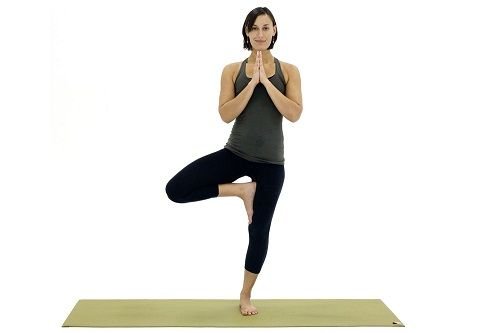
An excellent standing balance pose for beginners, Tree Pose helps you gain focus and clarity while learning to breathe on one foot. It replicates the steady, grounded stance of a tree.
- How to do it: Place your right foot on your inner left thigh (or calf, but never on the knee). Bring your hands to a prayer position at your chest. Find a fixed spot to gaze at to maintain balance. Hold for 8-10 breaths, then switch sides.
- Beginner's Tip: Feel free to brace your back against a wall if you feel unsteady.
3. Triangle Pose (Trikonasana)

A wonderful standing pose to stretch the sides of the waist, open the lungs, and strengthen the legs. Triangle Pose is essential for toning the entire body.
- How to do it: Stand with your feet wide apart. Turn your right foot out 90 degrees. Hinge at your hips to the right, resting your right hand on your shin, ankle, or the floor. Stretch your left arm to the ceiling, turning your gaze upward. Hold for 5-8 breaths and repeat on the other side.
- Beginner's Tip: If you feel unstable, place your back heel against a wall for support.
4. Warrior I Pose (Virabhadrasana I)
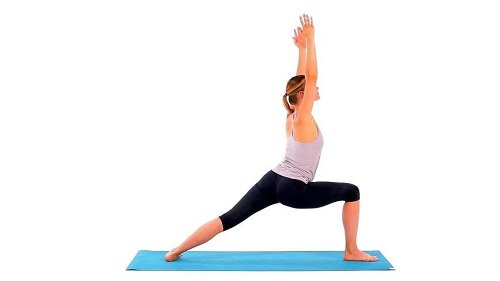
Warrior I is quintessential for building strength, stamina, and confidence. It powerfully stretches the hips and thighs while strengthening the lower body and core.
- How to do it: Step your left foot back, angling it at 45 degrees. Bend your right knee so it's directly over the ankle. Keep the back leg straight and heel grounded. Raise your arms perpendicular to the floor. Hold, then repeat on the other side.
- Beginner's Tip: To protect your lower back, focus on lifting your pubic bone toward your navel and lengthening your tailbone toward the floor.
5. Downward-Facing Dog (Adho Mukha Svanasana)
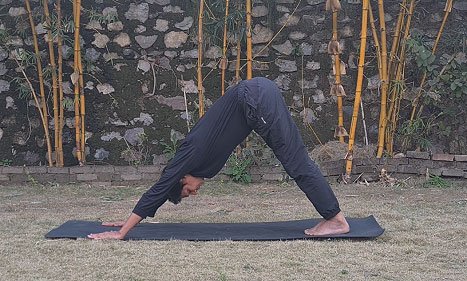
One of the most widely recognized yoga poses, Downward-Facing Dog stretches and strengthens the entire body. It serves as both a transitional pose and a resting position.
- How to do it: Start on your hands and knees. Exhale and lift your knees off the floor, raising your hips toward the ceiling to create an inverted 'V' shape. Gently press your heels toward the floor. Keep your head between your upper arms. Hold for 5-10 breaths.
- Beginner's Tip: You can keep your knees bent to help lengthen your spine. If your shoulders are tight, place blocks under your hands.
6. Upward-Facing Dog (Urdhva Mukha Svanasana)
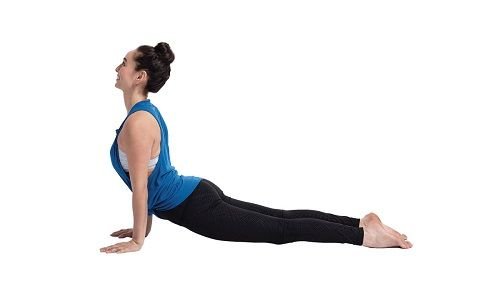
Often practiced in sequence with Downward-Facing Dog, this pose awakens upper-body strength and provides a wonderful stretch for the chest and abdomen.
- How to do it: Lie on your stomach. Place your palms beside your waist. Inhale and press through your hands, straightening your arms to lift your chest and legs a few inches off the floor. The tops of your feet and your hands are the only points of contact.
- Beginner's Tip: Actively draw your shoulders away from your ears to avoid pressure on your neck. You can keep your knees on the floor to reduce tension in your low back.
7. Seated Forward Fold (Paschimottanasana)

This pose is a perfect way to stretch the hamstrings, lower back, and upper back. It teaches you to breathe through challenging positions and calm the nervous system.
- How to do it: Sit on the floor with your legs extended in front of you. Inhale and lengthen your spine. Exhale and hinge at your hips to fold forward, reaching for your feet. Imagine your belly button moving toward your thighs. Hold for up to 10 breaths.
- Beginner's Tip: It's perfectly fine to keep your knees bent. If you feel any sharp pain, back off immediately.
8. Bridge Pose (Setubandhasana)
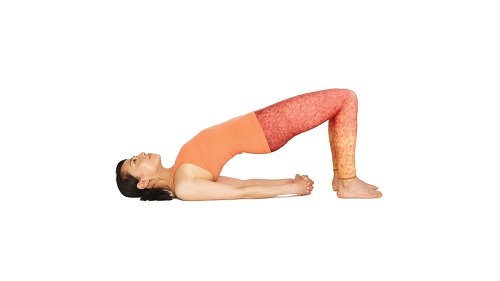
A counterpose to forward bends, Bridge is an accessible backbend that stretches the front of the body (chest, neck, spine) and strengthens the back (glutes, hamstrings).
- How to do it: Lie on your back with your knees bent and feet flat on the floor, hip-width apart. Press into your feet and lift your hips off the floor. Interlace your hands underneath your body and press your arms into the mat. Hold for 8-10 breaths.
- Beginner's Tip: For a restorative version, place a block or bolster under your sacrum for support. This can help ease low back and menstrual discomfort.
9. Child's Pose (Balasana)
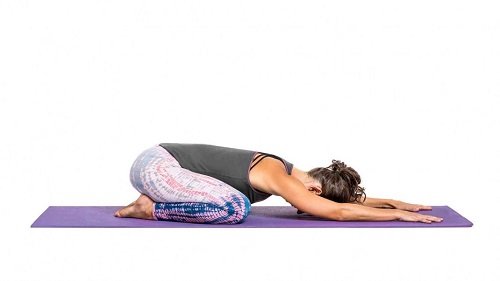
Child's Pose is a gentle resting pose that stretches the hips and thighs while calming the mind. It's an essential pose for practitioners of all levels to take a moment of rest.
- How to do it: Kneel on the floor, touch your big toes together, and sit on your heels. Separate your knees as wide as your hips. Exhale and fold forward, resting your forehead on the mat. Your arms can be stretched forward or rest alongside your body.
- Beginner's Tip: Place a folded blanket under your hips or head for extra comfort.
10. Corpse Pose (Savasana)

Though it looks like simply lying down, Savasana is often called the most difficult asana because it requires you to relax the body completely while keeping the mind awake and present. No yoga session is complete without it.
- How to do it: Lie on your back with your legs separated and arms resting alongside your body, palms facing up. Allow your breathing to be natural. Stay aware and present for at least 5-10 minutes.
- Beginner's Tip: To feel more grounded, place a folded blanket over your thighs. An eye pillow can also help you relax more deeply.
Watch & Practice Along

About the Author: Yogi Sandeep
Born in Rishikesh into a traditional family where the Vedic tradition has been a way of life for generations, Yogi Sandeep is the founder of Raj Yoga Rishikesh. He is an E-RYT 500 Teacher, holds a Master's degree in Yoga, and has over a decade of teaching experience.
Beginner Yoga FAQs
Can a beginner do yoga everyday?
Absolutely. Consistency is key. Even a short 20-minute practice each day can be more beneficial than one long session per week. Listen to your body and rest when you need to.
What is the best time to practice yoga?
Many people prefer practicing early in the morning to start their day with energy and clarity. However, an evening practice can be wonderful for winding down. The best time is the time that you can consistently make for yourself.
How long should a beginner's yoga session be?
Start with what is manageable for you. 20-30 minutes, three times a week, is a fantastic goal. Don't let unrealistic expectations stop you—do what you can, and you will see progress.
Can I do yoga during my period?
Yes, gentle yoga can be very beneficial during your period, especially for easing cramps and discomfort. It's generally advised to avoid deep inversions or strong core work. Always listen to your body.
Ready to Start Your Journey?
These poses are just the beginning. To build a safe, effective, and lifelong practice, expert guidance is key. Our 200-Hour Yoga Teacher Training is designed for all levels, providing the perfect foundation.
Learn About Our YTTC →
